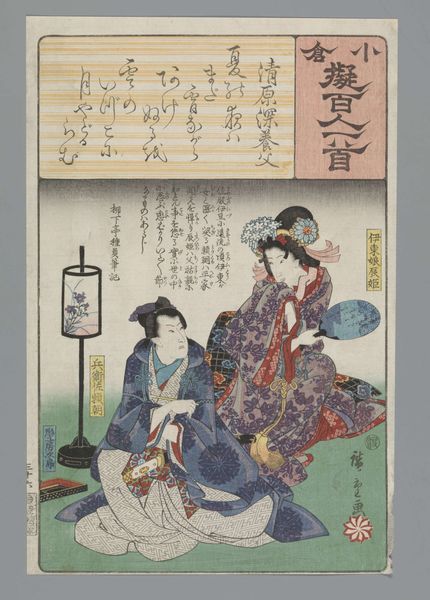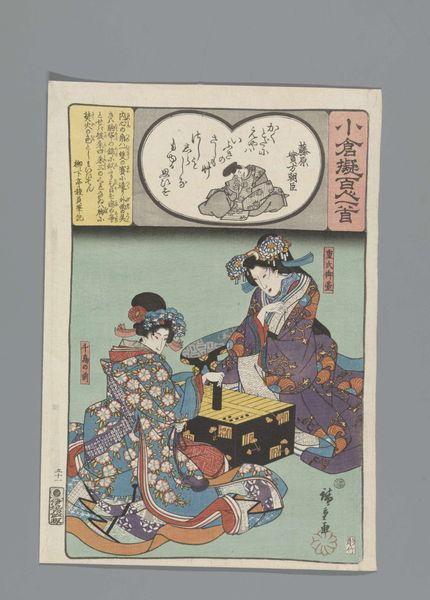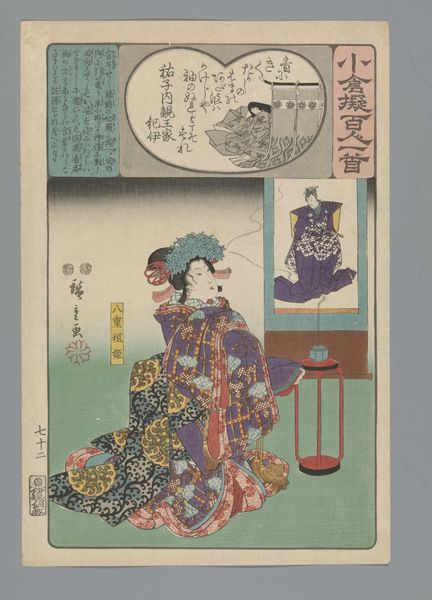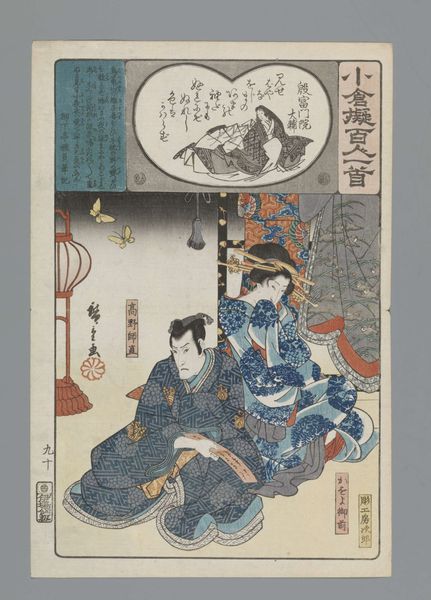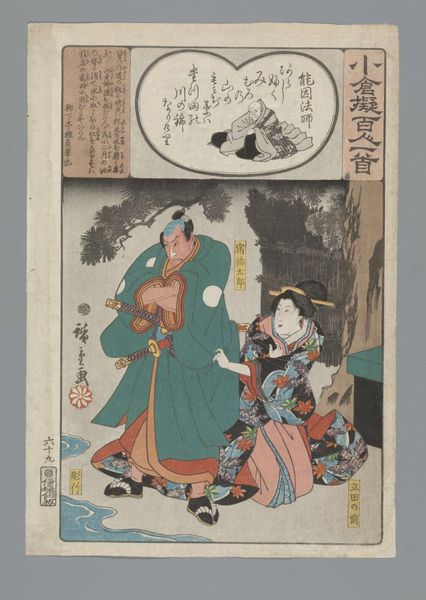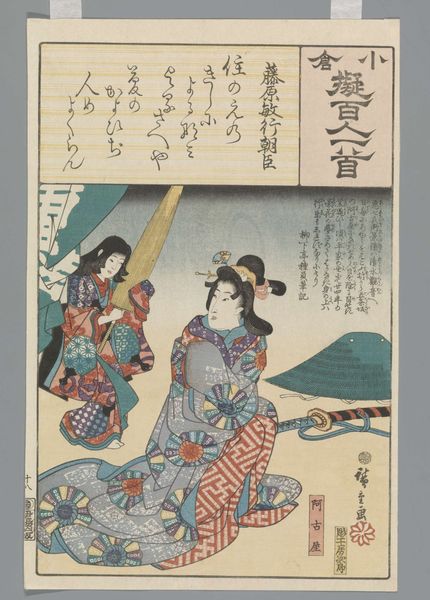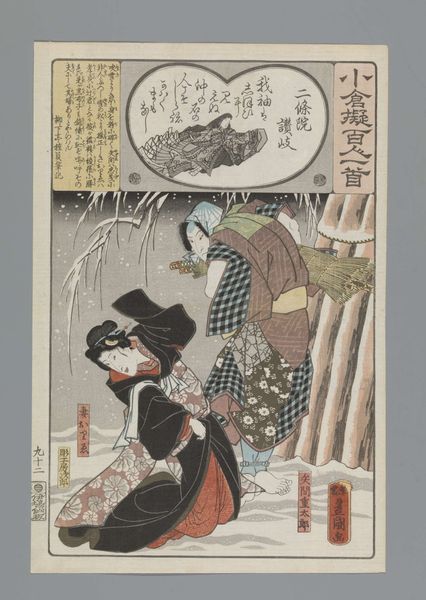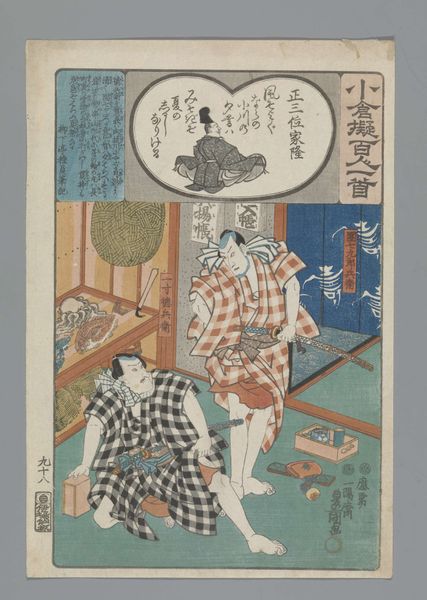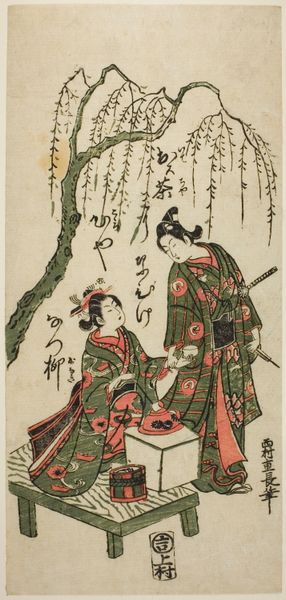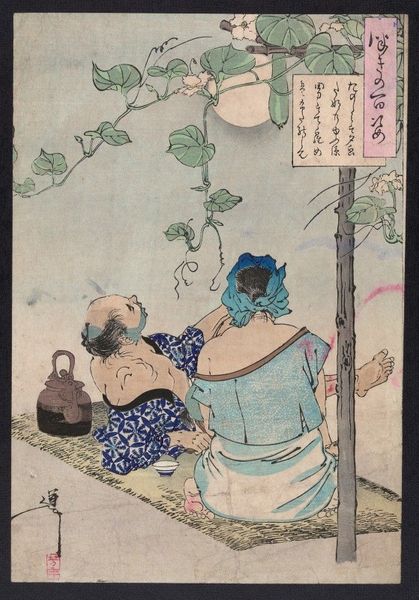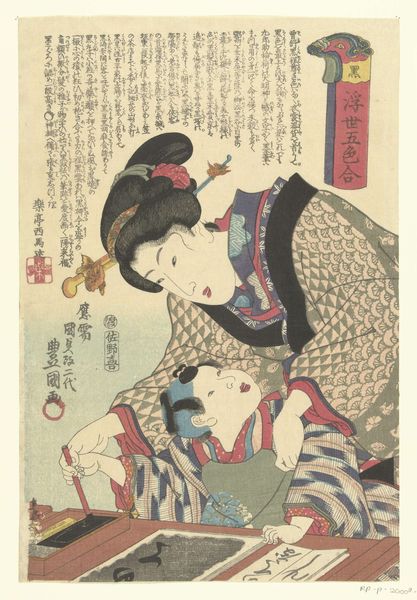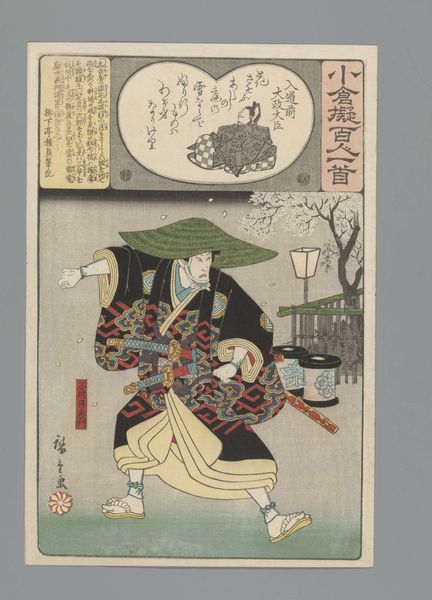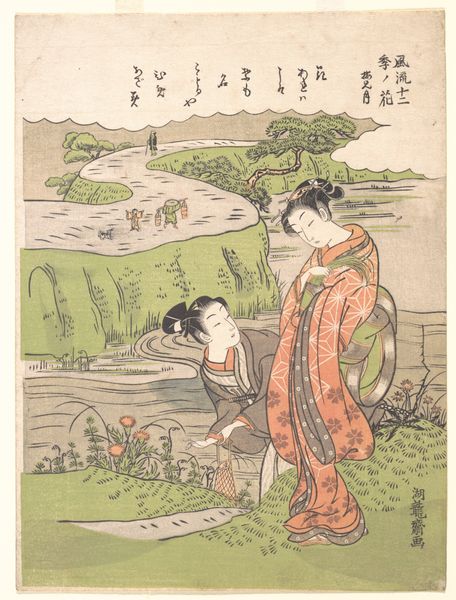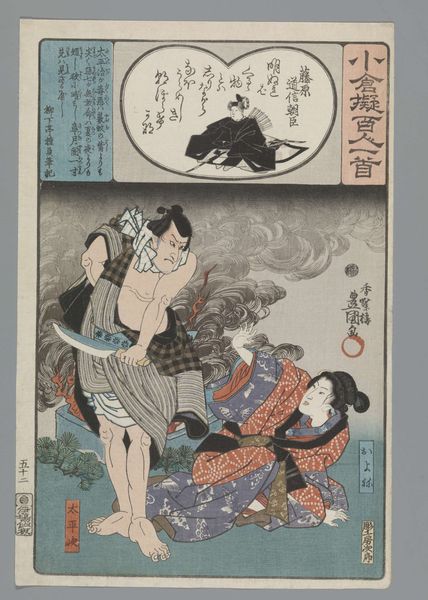
print, woodblock-print
#
portrait
#
narrative-art
# print
#
asian-art
#
landscape
#
waterfall
#
ukiyo-e
#
figuration
#
woodblock-print
Dimensions: height mm, width mm
Copyright: Rijks Museum: Open Domain
Curator: Let's discuss this captivating woodblock print, "Ogura Imitation of the One Hundred Poems," created by Utagawa Kunisada between 1847 and 1850. It's currently housed in the Rijksmuseum. Editor: It's remarkably vivid! The cascading waterfall juxtaposed with the figures in the foreground… the textures feel almost tangible despite being a print. I'm drawn to the strong verticals and the more subdued horizontal composition. Curator: Indeed. Kunisada, a prominent ukiyo-e artist, cleverly combines portraiture, landscape, and narrative in this work. Ukiyo-e prints were widely circulated, reflecting the cultural tastes and social dynamics of the Edo period. These artworks became more than mere aesthetic pieces; they mirror cultural values and public interests. Editor: I see how the narrative element fits in. Above the figures, that vignette showing what seems to be a seated figure against calligraphy—it appears like a play within a play. Curator: Exactly! Kunisada draws upon the "One Hundred Poets" anthology, which held immense cultural significance. By referencing classic poetry through contemporary settings, he was both educating and entertaining his audience. It showcases how Kunisada blended aristocratic heritage with the demotic. Editor: I appreciate that balance, too. There's a striking dichotomy at play between that little scene and the drama in the lower half, especially the body language of the seated figures, near the waterfall. The red against the green establishes focal tension. Curator: It would be easy to overlook the detail on that little sake bowl abandoned near the bottom edge, wouldn't it? That may signal that something momentous has transpired, perhaps a moment of drama, in the viewing party or tryst represented in the foreground! The way the artist has made us the viewers active participants is quite fascinating. Editor: And I also see that the gourds appear in stark contrast with the heavy lines on the falling water—they have almost nothing in common in their texture or treatment, and they become striking objects that lead to new ways of understanding the work's many contrasts. Curator: Well, reflecting on this further, Kunisada’s fusion of poetic heritage with contemporary themes offered the 19th-century public an entry point into classic culture that could mirror their modern interests and activities. Editor: I can also appreciate how its geometric relationships contribute to an artwork that still engages its audiences today!
Comments
No comments
Be the first to comment and join the conversation on the ultimate creative platform.
